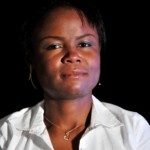Lien vers Pubmed [PMID] – 25482270
Mol. Ecol. 2015 Jan;24(2):508-21
In arthropods, the intracellular bacteria Wolbachia often induce cytoplasmic incompatibility (CI) between sperm and egg, which causes conditional embryonic death and promotes the spatial spread of Wolbachia infections into host populations. The ability of Wolbachia to spread in natural populations through CI has attracted attention for using these bacteria in vector-borne disease control. The dynamics of incompatible Wolbachia infections have been deeply investigated theoretically, whereas in natural populations, there are only few examples described, especially among incompatible infected hosts. Here, we have surveyed the distribution of two molecular Wolbachia strains (wPip11 and wPip31) infecting the mosquito Culex pipiens in Tunisia. We delineated a clear spatial structure of both infections, with a sharp contact zone separating their distribution areas. Crossing experiments with isofemale lines from different localities showed three crossing types: wPip11-infected males always sterilize wPip31-infected females; however, while most wPip31-infected males were compatible with wPip11-infected females, a few completely sterilize them. The wPip11 strain was thus expected to spread, but temporal dynamics over 7 years of monitoring shows the stability of the contact zone. We examined which factors may contribute to the observed stability, both theoretically and empirically. Population cage experiments, field samples and modelling did not support significant impacts of local adaptation or assortative mating on the stability of wPip infection structure. By contrast, low dispersal probability and metapopulation dynamics in the host Cx. pipiens probably play major roles. This study highlights the need of understanding CI dynamics in natural populations to design effective and sustainable Wolbachia-based control strategies.

